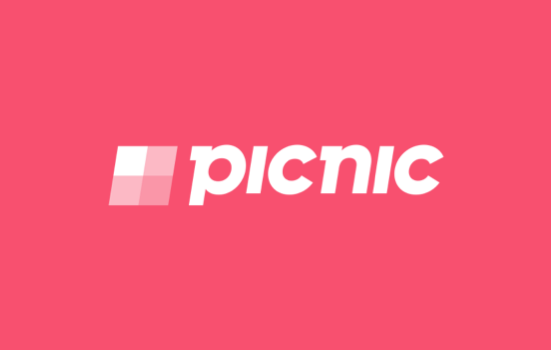The strongest long-term opportunities for healthcare companies primarily fall in two industries: drug manufacturing and diagnostics and research.
And all 22 of the best healthcare companies to invest in have intangible assets that provide a wide moat against competitors. This intangible-asset advantage is often derived from either patents or proprietary technology.
Patents are temporary government licenses that exclude competition from copying an invention. For example, in pharmaceutical companies, patents are necessary owing to the ease with which some drugs can be replicated. Similarly, patents are vital in the medical-device industry to protect companies’ product designs.
Proprietary technology encompasses more complex processes and tools than a company’s patents might cover—many companies keep their intellectual property as a trade secret rather than provide a public description in a patent application. In general, the more sophisticated and customized a product or service becomes, the more that proprietary technology plays a role in driving competitive advantage. In healthcare, this is seen in biopharma, medical devices, and contract research organizations.
Here, we highlight the 22 healthcare companies that made our list of the Best Companies to Own in 2025. These companies earned their spot on the list by carving out wide moats and making smart capital decisions.
22 Best Healthcare Stocks to Invest In
Because this list is built for the long term, rather than to identify presently undervalued companies, it may not be the right time to buy all these names. Rather, we believe these healthcare companies are strong choices for an investor’s watchlist.
You should consider buying only when they’re trading below our price/fair value estimate, which assesses whether a stock’s price is high or low compared with its fundamental value.
Intangible Assets Give Drug Manufacturers Their Edge
All the drug manufacturers on the best companies list, both general and specialty, gain an edge from their intangible assets.
Pfizer PFE is a prominent member of the group. “Pfizer’s patent-protected drugs carry strong pricing power that enables the firm to generate returns on invested capital in excess of its cost of capital,” writes Karen Andersen, Morningstar director of equity research for healthcare. “The patents give the company time to develop the next generation of drugs before generic competition arises.”
Johnson & Johnson JNJ, the world’s largest and most diverse healthcare firm with a market cap of $367 billion as of April 8, 2025, also thrives in this area. Andersen notes that Johnson & Johnson’s wide moat is “supported by intellectual property in the drug group and intellectual property and switching costs in the device segment … Several of J&J’s key next-generation pipeline drugs are specialty drugs that tend to carry strong pricing power as well as lower regulatory hurdles for approval.”
Twelve of the 22 companies with a moat driven by intangible assets have an additional moat source, either a cost advantage or a high switching cost.
Switching Costs Aid the Medical-Device and Diagnostic Industries
There are seven qualifying companies in the diagnostic and research or medical-devices industries; all have an advantage from intangible assets and also benefit further from switching costs.
With a market cap of $164 billion as of April 8, 2025, Thermo Fisher Scientific TMO is the largest of the diagnostics and research companies on the list. Thermo Fisher sells scientific instruments and laboratory equipment, diagnostics consumables, and life science reagents.
Like key competitors Agilent A and Waters WAT, Thermo Fisher’s analytical instrument business benefits from intangible assets and switching costs, says Morningstar’s Director of European Equity Research Alex Morozov. “The intangible asset is the firm’s differentiated technology and its leadership positions within tools such as mass spectrometry, chromatography, microscopy, and others … The business is also rather sticky, particularly within the biopharma end market, where the regulatory process assures high switching costs. Production methods have to stay uniform throughout the lifecycle of a drug, which often extends beyond the lifecycle of a typical mass spectrometer.”
Medical devices, for their part, have high switching costs because surgeons develop expertise in using a differentiated set of tools and device systems have component parts that are designed to work together.
“The highest switching costs in medical devices is in orthopedics, where all the device makers have their own differentiated implants and the tools to install the implants,” says Morningstar Senior Analyst Debbie Wang.
“It takes years for the orthopedic surgeons to become practiced enough on one vendor’s tools and implants to deliver optimal patient outcomes, and after they have mastered them, they are reluctant to switch to another vendor where they’d have to relearn some of it,” Wang explains. “For this reason, the switching costs are the highest for companies like Zimmer Biomet ZBH and Stryker SYK.”
The Top Health Information Services Company
The health information services subindustry has the fewest representatives on our list: just GE HealthCare Technologies Inc GEHC.
The medical imaging industry is a somewhat consolidated oligopoly, with the top three players (GEHC, Siemens Healthineers SMMNY, and Philips PHIA) holding 70% of the global market share.
“We award a wide economic for GEHC, based primarily based on intangible assets and switching costs in its imaging and ultrasound segments. Intangible assets include GEHC’s comprehensive product catalogue of cutting-edge products and extensive servicing networks. Switching costs primarily consist of integration of its hardware and software ecosystems into hospital workflows, and servicing contracts for long-lived capital equipment.
“Additionally, its pharmaceutical diagnostics segment also has intangibles and switching costs, which has built out an extensive global supply chain and boasts a decades-long track record of high quality and stable supply. Across its segments, its competitive advantages are tied to its scale and integration into healthcare systems, and we think it would be very hard to displace GEHC in these businesses within 20 years.”
—Jay Lee, senior equity analyst
Find the full list of companies and read about our selection methodology.







